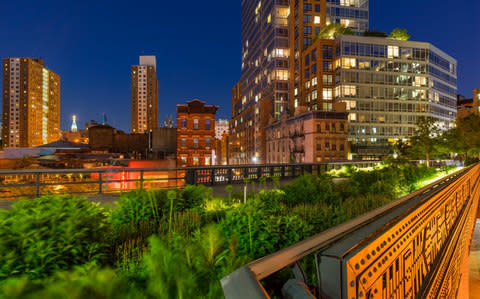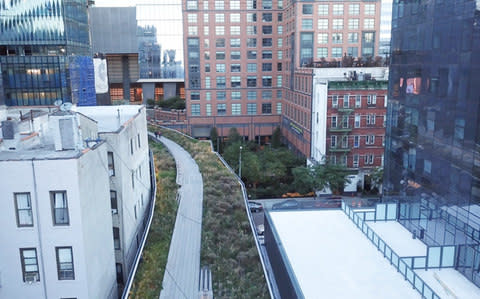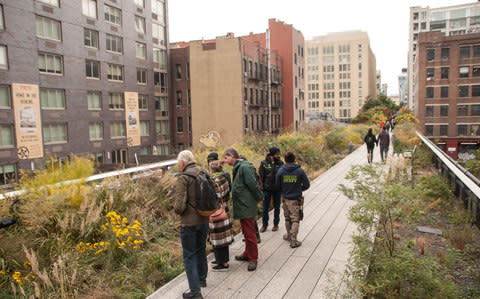The High Line masterclass: join Piet Oudolf for a lesson in prairie planting

Join Dutch planting guru Piet Oudolf and author Dr Noel Kingsbury as they walk the High Line, the elevated linear park in New York that has become a huge hit with locals and tourists alike. Online gardening school Learning With Experts produced this video exclusively for Telegraph Gardening. Dr Noel Kingsbury takes up the story:
The New York High Line has become one of the world’s most prominent urban parks. A one-and-half-mile-long disused elevated railway, through what was once the grimly industrial meatpacking district on the west side of Manhattan, is now a richly planted urban promenade.
Tourists, locals, school children on outings, models in fashion shoots, lovers, would-be-lovers, all blend into a constant stream of humanity. And of course gardeners, for the complexity of the planting has been a constant source of inspiration, especially for those seeking the naturalistic look.

With the first stage planted up and open since 2009, and the final stage completed in 2014, the High Line’s plantings are rapidly maturing. “Plants grow and conditions change,” explains the Director of Horticulture Andi Pettis, “and new buildings around the High Line change the environment too, casting shade or reflecting heat during the summer”.
Piet Oudolf, the Dutch designer who created the plantings, makes at least an annual visit. Starting at the southern end, where steps by the side of the Whitney Museum take visitors up two storeys, he slowly works his way along the route, accompanied by Andi, and whichever gardener is in charge of the particular section he is in. This is an opportunity for the staff to outline problems and ask his advice, or to make their own suggestions for future development and see what his reaction is.

Parts of the High Line have trees, which, despite the shallow substrate (45-90cm deep) have flourished, and as they do so, make life increasingly difficult for plants underneath. The original planting has allowed for this to some extent, using species such as the low-growing ornamental grass Sesleria autumnalis, which are tolerant of sun or light shade. In other places, decisions have to be made – a reluctant one to remove a tree altogether, or to cut it back, or to introduce more shade-tolerant species to replace those dying out.
Botanical names are bandied about, and some sort of decision made. Piet does not write anything down, and often the staff don’t either; there’s clearly not going to be any kind of box-ticking report. Everyone knows their plants, and everyone has a huge sense of pride in their work. You just know that ideas will be taken up, and suggestions followed.
Much of the High Line is a delicate balance between a number of species. Eight years is still quite young for any kind of stable ecosystem. One staff member is worried about autumn-flowering asters seeding so vigorously that they are overwhelming the ornamental grasses that are vital for the prairie look which is an important part of the aesthetic.

In other places certain grasses are seeding so vigorously that they threaten to overwhelm other plants. Discussions are held about which plants to thin out, and which to try to divide up and transplant.
The High Line will surely never settle down to being just another urban park. Such a place will always have an ebb and flow of species and similar to-and-fro discussions between its creator and managers. Nature-friendly gardening does not deal in certainties or a fixed end-result.
That in itself is an important lesson for the many gardeners and landscape professionals who come here.

